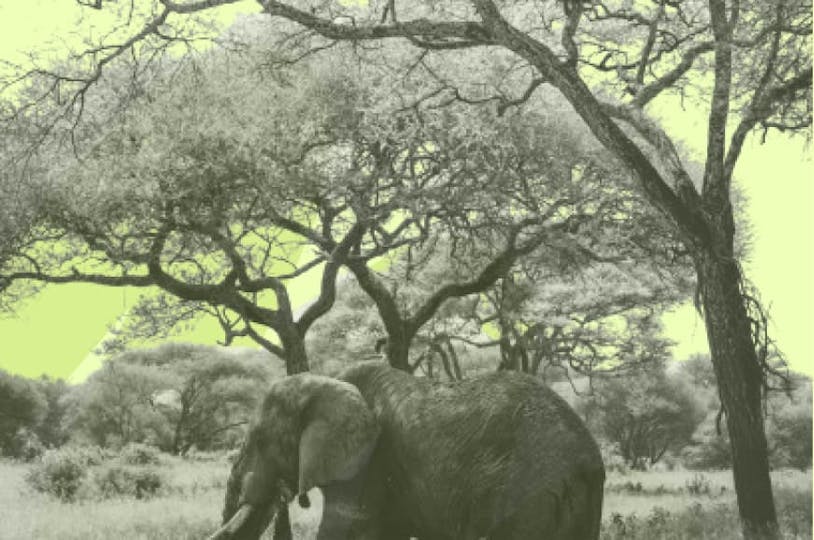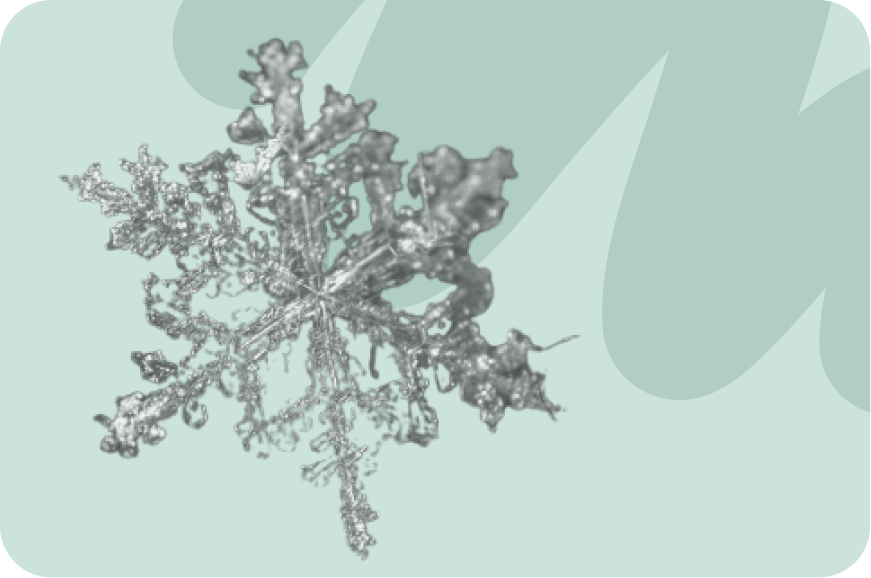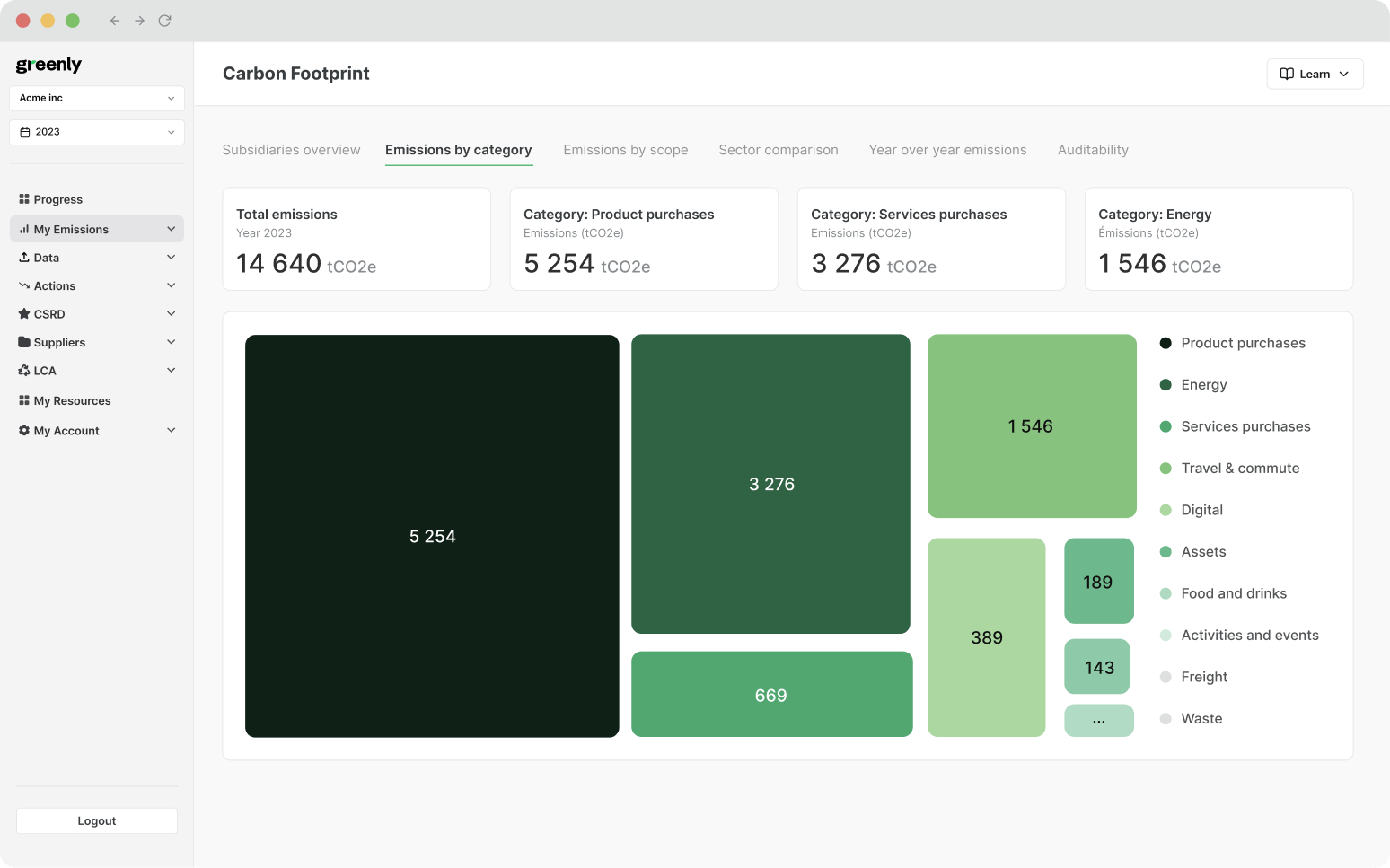
Sustainable Development Goals (SDGs): All You Need to Know
The United Nations has defined 17 goals, aimed at creating a better world. What are these so-called "Sustainable Development Goals" ? Explanations.
ESG / CSR
Industries



Most of us don’t give much thought to the ground beneath our feet. But in some of the coldest regions on Earth, that ground isn’t just dirt and rock – it’s what’s known as permafrost.
Frozen solid for thousands of years, this layer of earth has quietly held onto a vast store of ancient carbon, plant matter, and even animal remains. Now, as global temperatures rise, permafrost is starting to thaw, and the consequences can be alarming.
Permafrost may not make headlines as often as wildfires or rising sea levels, but scientists consider it to be one of the most critical, and potentially dangerous, elements in the climate system.
In this article, we’ll break down what permafrost actually is, why it matters, and what happens when it starts to thaw.
Permafrost forms in areas where the ground (not the surface ice) stays at or below 0°C for at least two consecutive years. It’s a mix of soil, rock, sand, and organic material (like long-dead plants and animals) that have been locked in a deep freeze, in some cases for tens of thousands of years. Unlike glaciers or ice sheets, which sit on top of the land, permafrost refers specifically to frozen ground beneath the surface.
This frozen layer isn’t always visible, it often sits hidden beneath a surface layer that thaws and refreezes seasonally, something known as the active layer. Below that, the permafrost remains hard as rock.
Scientists usually classify permafrost into three main types depending on how continuous or patchy it is across the landscape:
| Type of Permafrost | Description | Main Locations |
|---|---|---|
| Continuous | Covers more than 90% of the land in a given area | Northern Siberia, Arctic Canada |
| Discontinuous | Covers 50–90% of land, with some unfrozen gaps | Alaska Interior, Northern Scandinavia |
| Sporadic | Less than 50% coverage, often shallow and isolated | Southern boreal regions, some mountain areas |
So while permafrost sounds like something that is specific to the Arctic, it’s actually widespread, covering huge stretches of the Northern Hemisphere and even appearing in high mountain ranges further south.
Permafrost covers around 11% of the global surface, rising to 15% of the land in the Northern Hemisphere
It’s most commonly found in cold, high-latitude regions where the air temperature stays below freezing for most of the year. Think of places like:
The Tibetan Plateau and high-altitude Andes and Alps – proof that it’s not just latitude, but elevation, that matters too
| Country | Approximate Permafrost Coverage (of land area) |
|---|---|
| Russia | 65% |
| Canada | 50% |
| China | 22% |
| Alaska | 85% |
Much of this frozen ground lies far from where most people live, but its influence extends well beyond the Arctic. As global temperatures climb, the permafrost zone is shifting, with frozen soil giving way to soggy, unstable landscapes, creating a whole myriad of problems.
When we talk about climate change, melting glaciers and rising seas tend to steal the spotlight. But there’s another kind of melt that’s quietly accelerating, and it’s happening underground. Permafrost holds an enormous amount of carbon that’s been frozen in place for thousands of years. As the ground begins to thaw, that carbon doesn’t stay buried. It escapes into the atmosphere, turning frozen soil into a powerful driver of global warming.
This is because over thousands of years, permafrost has acted like a natural freezer, preserving organic matter like plant roots, mosses, and even ancient animal remains. The cold temperatures kept that material from decomposing. But when the ground warms and starts to thaw, microbes wake up and begin breaking down that matter, releasing carbon dioxide and methane as by-products. Methane in particular is a very potent greenhouse gas; in fact, it’s around 80 times more powerful than CO2 over a 20-year period.
This creates a dangerous feedback loop: rising temperatures cause more permafrost to thaw, which releases more greenhouse gases, which in turn leads to more warming. Scientists call this a climate feedback, and permafrost is one of the most powerful and unpredictable examples.
Permafrost doesn’t melt overnight, but the changes are already underway. What was once stable, frozen ground is now beginning to buckle, collapse, and shift, releasing ancient carbon and reshaping ecosystems along the way.
One of the clearest signs of this is something called thermokarst, a dramatic collapse of the ground surface as ice-rich permafrost melts. These landforms can turn once-flat tundra into a landscape of sinkholes, slumps, and sagging hillsides. In Siberia, the Batagay “megaslump” (a yawning scar in the landscape that’s been growing rapidly in recent years) has become one of the most visible examples of this kind of change.
Infrastructure built on permafrost is also beginning to fail. In parts of Alaska, homes are sinking, roads are cracking, and pipelines are warping as the ground beneath them gives way.
And it’s not just the Arctic. In alpine regions, thawing permafrost is making slopes more unstable, increasing the risk of landslides and rockfalls, a problem that’s already affecting mountain communities and hiking routes in the European Alps and parts of the Andes.

The thawing of permafrost has serious, far-reaching implications. From releasing potent greenhouse gases to damaging homes and roads, the effects are unfolding across ecosystems, economies, and the climate system itself.
Let’s break down the most significant impacts:
One of the most alarming consequences of permafrost thaw is the release of carbon dioxide (CO2) and methane (CH4) from long-frozen organic matter.
As permafrost melts, microbes begin breaking down plant and animal remains that have been locked away for millennia. In oxygen-rich conditions, this process releases CO2. In waterlogged or oxygen-poor areas - like thaw lakes and bogs - it produces methane, which is far more powerful in trapping heat.
This means that thawing permafrost isn’t just a consequence of climate change, it’s starting to act as a driver of it.
Many Arctic communities were built assuming the ground beneath them was permanently frozen. As it softens and shifts, the results can be disastrous.
In Alaska, homes are tilting, highways are warping, and runways are cracking. Some Indigenous villages are being forced to relocate entirely as the ground beneath them becomes uninhabitable. It’s a problem that comes with a steep price tag, with climate-related ground instability potentially costing Alaska hundreds of millions in damages over the coming decades.
Thawing ground changes the way water moves through landscapes. In some places, it leads to the formation of ponds and wetlands. In others, it causes soil to dry out and vegetation to shift from mossy tundra to shrubland, for example. These ecological shifts can disrupt plant and animal life that depend on cold, stable conditions.
In alpine areas, permafrost acts like the glue that holds mountainsides together. As it thaws, the risk of landslides and rockfalls increases. This is already becoming a concern in the Alps, where summer heatwaves have triggered deadly rockfalls in areas once considered geologically stable.
One of the more unsettling risks linked to permafrost thaw is the release of ancient bacteria and viruses. In 2016, a child in northern Siberia died from anthrax after a thawed reindeer carcass, frozen for decades, released spores into the environment.
While these cases are rare, scientists have warned that deeper thawing could expose long-dormant pathogens, some of which we may not be prepared to deal with.
That said, there’s still plenty we can do.
Very simply, the more the planet warms, the more permafrost we lose, and the more carbon that gets released, pushing temperatures higher still.
Slowing global warming is the only viable way to limit the scale of permafrost thaw. That means rapidly reducing greenhouse gas emissions, phasing out fossil fuels, and accelerating the transition to low-carbon energy systems. It also means protecting existing carbon sinks like forests and wetlands, and investing in strategies to remove carbon from the atmosphere.
Some scientists are exploring creative ways to preserve permafrost locally. One of the best-known projects is Pleistocene Park in northeastern Siberia, a long-running experiment that involves reintroducing large herbivores like bison and horses to trample snow and encourage the growth of grasslands, which reflect more sunlight and insulate the ground less than forest or tundra.
The idea is to mimic Ice Age ecosystems, which may have helped keep the soil colder. Early results are promising, though it’s still a localised solution that can’t be scaled up easily.
Other efforts include engineered solutions, like reflective ground coverings and subterranean cooling systems, to stabilise infrastructure built on permafrost. These approaches can help protect roads and pipelines, but they don’t address the broader climate feedback.
Given how quickly conditions are changing, monitoring permafrost is more important than ever. A growing network of international researchers, including the Global Terrestrial Network for Permafrost, is tracking ground temperatures and ice content across key sites in the Arctic and mountain regions.
Better data helps improve models that predict how much carbon may be released, and when. That, in turn, helps policymakers and scientists prioritise climate responses and infrastructure planning.
Preserving permafrost and staying within the 1.5°C global temperature threshold will require action on every level, from governments and scientists to businesses. Companies have a critical role to play in reducing emissions, and doing so effectively means having the right tools and strategy in place.
That’s where Greenly comes in. Our carbon management platform helps businesses:
